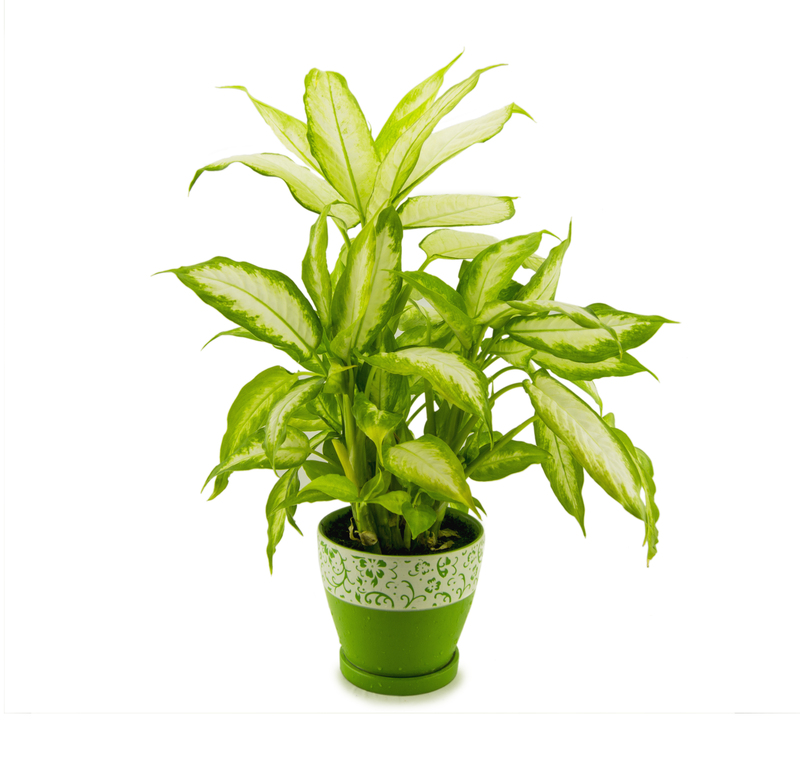Design your sanctuary with timeless Zen garden principles
Posted on 06/09/2025
Design Your Sanctuary with Timeless Zen Garden Principles
Are you searching for a way to create a peaceful retreat in your home or outdoor space? Discover how you can design your sanctuary with timeless Zen garden principles. Known for their tranquil beauty, simplicity, and meditative qualities, Zen gardens offer a blueprint for cultivating harmony and mindfulness in daily life. This comprehensive guide unpacks the art and philosophy behind Zen garden design and reveals how you can transform any space--no matter how big or small--into your very own sanctuary.

What is a Zen Garden?
Originating from Japan, a Zen garden (known as karesansui or dry landscape garden) is a stylized landscape created to inspire meditation, reflection, and serenity. Traditionally, these gardens are composed of rocks, sand, gravel, moss, and carefully placed plants. Unlike Western gardens, which might focus on bright floral displays and abundance, Zen gardens prioritize simplicity, emptiness, and minimalism--emphasizing the beauty of natural elements and spatial relationships.
The Purpose of a Zen-Inspired Sanctuary
- Encourage mindfulness and help clear the mind of distractions.
- Create a sense of peace and retreat from the chaos of everyday life.
- Connect with nature, even in urban environments.
- Enhance focus and support meditation or quiet contemplation.
Essential Elements of Timeless Zen Garden Principles
To design your sanctuary with enduring Zen garden concepts, it's critical to understand the key principles and elements behind their timeless appeal:
1. Simplicity (Kanso)
Simplicity, or kanso, is the cornerstone of Zen landscaping. Zen gardens favor clean lines, uncluttered spaces, and subdued color palettes. This allows the mind to settle and focus, reducing sensory overload and promoting calm.
- Limit decorative elements--each object should have purpose and meaning.
- Keep the palette neutral: soft greens, browns, grays, and whites.
2. Asymmetry (Fukinsei)
Perfect symmetry is eschewed in favor of natural, irregular arrangements that mimic the unpredictability of the natural world. Use odd numbers of stones, staggered plantings, and flowing pathways to create a more dynamic, authentic effect.
- Arrange rocks and features in groups of three or five.
- Let paths curve gently rather than forming straight lines.
3. Balance of Elements
A classic Zen garden design incorporates the five natural elements:
- Earth (rocks, soil, boulders)
- Water (ponds, gravel streams, fountains--even if simulated)
- Fire (lanterns, candles, sunlight)
- Wind (movement of grasses or wind chimes)
- Space/void (open, uncluttered areas)
4. Symbolism and Abstraction
Rather than depicting actual landscapes, Zen garden layouts symbolize greater realities. Raked gravel or sand may stand for rivers or oceans, while rocks might represent mountains or islands. This encourages contemplation and personal interpretation.
- Use rocks of different shapes and sizes to represent various aspects of nature.
- Rake gravel in linear, circular, or wave-like patterns to evoke water movement.
5. Mindful Placement
Every item in a Zen-inspired sanctuary is placed with intention. Nothing is random--this mindful approach to arrangement cultivates presence and awareness.
- Choose focal points such as a unique stone, small statue, or patch of moss.
- Allow for negative space or emptiness around key features.
Choosing the Perfect Location for Your Zen Sanctuary
When bringing Zen sanctuary design principles into your space, location is key. Consider:
- Privacy: Select a quiet area away from heavy foot traffic or distractions.
- Light: Opt for gentle, dappled sunlight over harsh direct rays.
- Natural Surroundings: Take advantage of existing trees, stones, or slopes.
- Scale: Zen gardens can be expansive or compact--adapt the layout to your available area.
Zen gardens aren't only for outdoors. Balconies, patios, rooftops, and even indoor corners can become sanctuaries with thoughtful application of Zen garden principles.
Step-by-Step: How to Design Your Sanctuary with Zen Garden Ideas
Step 1: Define Your Purpose
Before you begin, ask yourself:
- Do you want a space for meditation, yoga, reading, or simple relaxation?
- Will your sanctuary serve as a quiet retreat or a contemplative showpiece?
Step 2: Make a Plan
Sketch your area, marking where sunlight falls, where privacy is highest, and any natural features you want to incorporate or conceal. Visualize how you'll move through the space.
Step 3: Select Key Zen Garden Elements
- Sand or Gravel: Use for large, open sections. Light-colored gravel reflects calm, while darker stones can create depth.
- Rocks and Stones: Choose stones with unique shapes or weathered surfaces. Group in asymmetrical clusters.
- Greenery: Opt for moss, bamboo, ferns, or small evergreens. Keep plantings sparse and low-maintenance.
- Water Features: Add a subtle fountain, a still pond, or evoke water through rippled gravel patterns.
- Paths: Design meandering paths with stepping stones, gravel, or earthen trails to guide mindful walking.
- Decor: Carefully curate a few meaningful features like a lantern, stone basin, Buddha statue, or wooden bench.
Step 4: Focus on Layout and Flow
The arrangement of your chosen elements should:
- Encourage slow movement and reflection.
- Create layers of interest from multiple angles.
- Allow for restful "negative" spaces.
- Highlight key focal points in the garden.
Step 5: Add Personal Touches
- Place a wind chime where the breeze can catch it for gentle sound therapy.
- Integrate a meditation cushion, small table, or comfortable garden seat.
- Use subtle, natural lighting for evening tranquility.
Personalize your Zen oasis without breaking the sense of simplicity and balance.
Enhancing Your Space: Zen Garden Principles Indoors and Out
You don't need a traditional Japanese courtyard to create a Zen-inspired sanctuary. Here's how these principles adapt to any environment:
Small Balconies or Patios
- Use shallow trays or containers for sand and rocks.
- Plant small clusters of moss or succulents.
- Hang simple bamboo screens for privacy and texture.
Indoor Corners
- Add a tabletop Zen garden--mini raked sand, a few pebbles and a tiny figurine.
- Display a bonsai tree or a potted fern with rocks at the base.
- Incorporate a soothing water feature, like a tabletop fountain.
Larger Gardens or Backyards
- Design winding paths that encourage quiet strolls.
- Build a dry riverbed with raked gravel and placed stones.
- Carve out a central platform for yoga or meditation practice.
Maintenance Tips for Your Zen Sanctuary
A key benefit when you design your sanctuary with timeless Zen garden principles is ongoing ease of maintenance--but a little attention keeps the calm intact.
- Rake sand or gravel regularly to refresh patterns and cleanse energy.
- Prune plants to maintain clean lines and avoid overgrowth.
- Wipe or brush stones to keep them free of debris or moss buildup where not desired.
- Remove weeds promptly so they don't disrupt the sense of order and simplicity.
Remember: The act of caretaking itself can become a mindful meditation--a core Zen philosophy.
Modern Twists on Zen Garden Principles
While traditional Zen garden concepts are timeless, you can infuse your persona and lifestyle with gentle updates:
- Integrate modern materials like concrete or corten steel in harmony with natural features.
- Use LED lighting to softly illuminate pathways and highlight stones after dark.
- Pair classic Zen with other minimalist aesthetics, such as Scandinavian or contemporary decor.
- Introduce meditation technology, such as a Bluetooth speaker with nature sounds, in a discreet way.

Benefits of a Zen Sanctuary in Your Life
- Reduces stress and promotes relaxation.
- Heightens mindfulness and focus--ideal for meditation and creative pursuits.
- Brings beauty, order, and tranquility to your daily environment.
- Inspires personal growth by fostering daily moments of stillness and reflection.
Conclusion: Your Personal Sanctuary Awaits
If you long for a space of serenity and balance in your busy world, designing your sanctuary using timeless Zen garden principles can awaken tranquility in any environment. By prioritizing simplicity, mindful placement, harmonious elements, and natural flow, your Zen sanctuary becomes more than just a garden--it's a living reminder to pause, breathe, and reconnect with yourself and nature.
Are you ready to design your sanctuary with Zen garden inspiration? Start today, and allow the timeless beauty of Zen to transform your home, mind, and life.
Frequently Asked Questions
-
Can I create a Zen garden in a small apartment?
Absolutely! Use tabletop Zen gardens, small trays with sand and stones, or dedicate a single shelf to carefully curated elements. Focus on minimalism and intentional placement for maximum effect in compact spaces. -
What kind of plants work best in a Zen sanctuary?
Choose moss, ferns, dwarf evergreens, or ornamental grasses for authentic simplicity and easy maintenance. Indoors, try bonsai or lucky bamboo. -
How do I keep my Zen garden looking 'Zen'?
Regular raking, gentle pruning, weeding, and periodic rearrangement keep the space fresh and orderly. Always remove clutter and focus on quality over quantity. -
Do I have to rake sand or gravel in my Zen-inspired sanctuary?
Raking is traditional, symbolizing the movement of water. It's a mindful practice but not essential. Instead, you might focus on sweeping, arranging stones, or simply enjoying the space as it is.
Begin your Zen garden journey today, and cultivate peace within your very own sanctuary!

